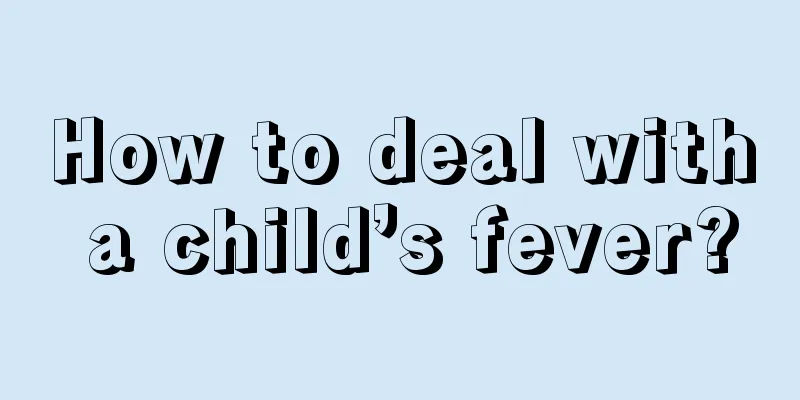What should I do if my child has umbilical hernia?

|
Many children will have umbilical hernia after birth. Many parents are very worried, always afraid that it will cause other problems for the baby. Although they see a doctor in time, most doctors just say that it is okay and it will be fine in a few days. But the worry still exists. So what should you do if a child has umbilical hernia? What causes umbilical hernia? Umbilical hernia is an extra-abdominal hernia in which the contents of the abdominal cavity protrude through a weak area at the umbilicus. The umbilicus is located in the middle of the abdominal wall and is the last part of the abdominal wall to close during embryonic development. The lack of fat tissue in the umbilicus causes the outermost skin, fascia and peritoneum of the abdominal wall to be directly connected together, making it the weakest part of the entire abdominal wall. The contents of the abdominal cavity can easily protrude from this part to form an umbilical hernia. Clinically, it is divided into two types: infant umbilical hernia and adult umbilical hernia. The former is far more common than the latter. Umbilical hernia in infants (45%): It is congenital and the causes include incomplete development of the umbilicus and incomplete closure of the umbilical ring; or the scar tissue of the umbilicus is weak and not strong enough. When the intra-abdominal pressure increases (frequent crying, constipation, phimosis, etc.), the internal organs may protrude from the umbilicus, and the covering is only scar tissue, subcutaneous tissue and skin. Most umbilical hernias in infants can heal themselves within one year through the gradual contraction of the umbilical fascia ring. Therefore, before the age of 2, unless the baby is incarcerated, you can wait. Use non-surgical treatment to promote spontaneous healing. If the child is over 2 years old and the diameter of the umbilical hernia exceeds 1.5 cm, surgical treatment is appropriate. Make a semicircular incision along the navel 1 cm away from the umbilicus to separate the skin and subcutaneous tissue, and significantly open the anterior rectus sheath, hernia ring and hernia sac. Make a midline incision on the abdominal line, free the hernia sac, and return the hernia contents. After removing part of the hernia sac at the hernia ring, suture it and then suture the edges of the rectus sheath on both sides (i.e., the abdominal line) interruptedly. Finally, suture the skin. Umbilical hernia in children tends to heal on its own and generally does not require surgical treatment. Umbilical hernia in adults is often related to increased abdominal pressure, such as pregnancy, liver cirrhosis, etc. If there is no incarceration, surgery should be performed with caution. Generally speaking, children do not need treatment for umbilical hernias, and most children will heal on their own. Of course, parents' worries are not unnecessary. When a child has this symptom, it is very necessary to see a doctor in time. In addition, you must pay attention to taking good care of the child when the child has umbilical hernia to prevent the child from getting infected and causing other diseases. |
<<: What causes shortness of breath in young children?
>>: What are the symptoms of ankylosing spondylitis in children?
Recommend
What should I do if my baby always has a fever in the middle of the night?
What parents fear most is a fever in their childr...
At what age do children start to change their teeth?
Tooth replacement is something that every child w...
How many times a day should a newborn baby be fed?
A newborn baby needs to rely on its mother's ...
The three-year-old sweats a lot
The problem of children sweating is a problem tha...
What are the symptoms of insufficient sleep time for primary school students?
Insufficient sleep time for primary school studen...
What causes squint in children?
Children always have problems when they are young...
Why does the child have a fever in the middle of the night?
During the growth of a child, the thing that moth...
What should I do if my child has a fever in the middle of the night?
What children fear most is catching a fever in th...
What is the difference between whooping cough and other coughs?
The symptoms of whooping cough are becoming more ...
Can a newborn baby be bathed every day?
The health of newborns is of great concern to par...
What should I do if my seven-year-old child has a poor appetite?
It is very common for children to be picky eaters...
Why does my seven-month-old baby always scratch his ears?
Many parents find that their babies have develope...
Can babies use air conditioning?
When it is particularly hot in the summer, the ba...
What can’t babies eat when they have chickenpox? These six must be avoided
If a child develops chickenpox, parents should no...
Causes of poor brain development in girls
From the birth to the growth of a child, it is a ...









